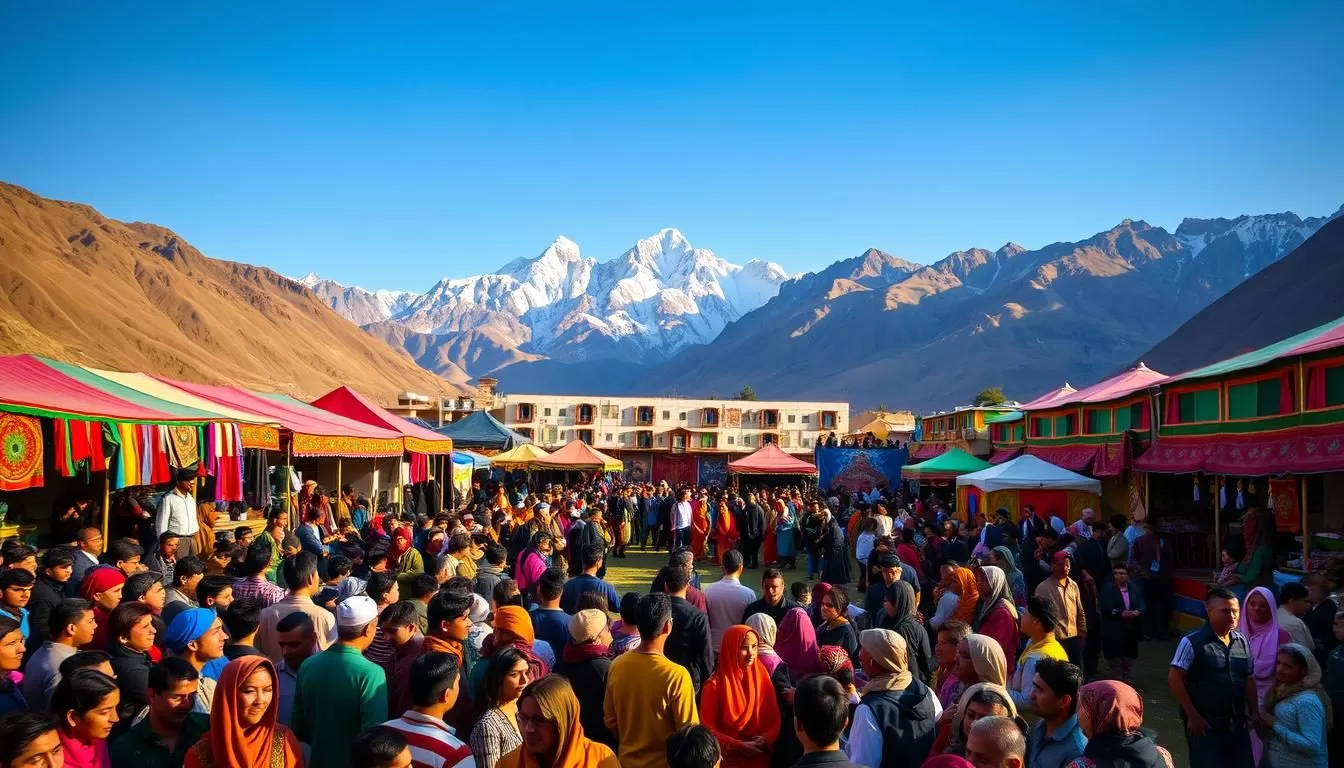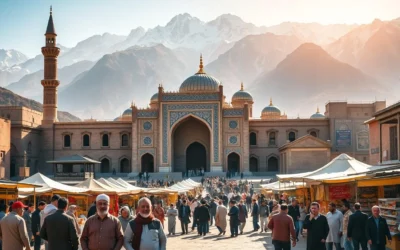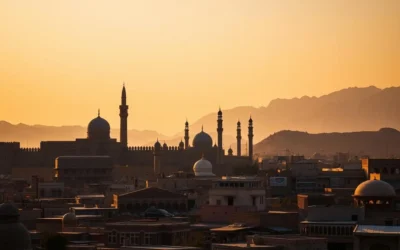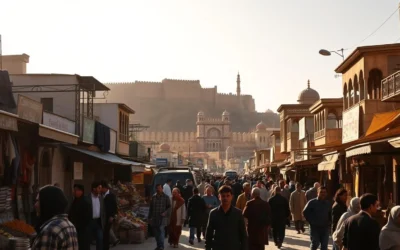✓ Accommodations✓ Flights✓ Rental Cars✓ Tours & Activities
As you explore the rich cultural heritage of this ancient land, you’ll discover a tapestry of vibrant traditions and festivals that reflect the spirit and resilience of its people.
From the jubilant celebrations of Nowruz to solemn mourning practices, these customs offer a captivating glimpse into Afghan life, illustrating values passed down through generations.
By timing your visit around these significant events, you can transform your experience from simply seeing a country to truly experiencing its beating heart and understanding the afghan culture that shapes the identity of this historic land.
The Rich Cultural Tapestry of Afghanistan
As you explore Afghanistan, you’ll discover a rich cultural heritage that’s been shaped by centuries of history and diverse influences. The country’s cultural identity is a complex blend of traditional practices, Islamic values, and historical events that have contributed to its unique cultural landscape.
A Land of Ancient Traditions and Celebrations
Afghanistan’s cultural heritage is characterized by its ancient traditions and celebrations, which are deeply intertwined with the nation’s history and cultural practices. You’ll find that the country’s festivals and celebrations are not just occasions for joyous gatherings but also represent the resilience and unity of Afghan society.
The cultural landscape of Afghanistan has been shaped by various influences, including Persian, Turkic, and South Asian traditions. This diverse cultural heritage is reflected in the country’s festivals, music, and dance, which are essential components of Afghan culture.
| Cultural Influence | Festivals and Celebrations | Cultural Significance |
|---|---|---|
| Persian | Nowruz | Celebration of the Persian New Year |
| Islamic | Eid al-Fitr and Eid al-Adha | Important Islamic festivals marking the end of Ramadan and the willingness to sacrifice |
| South Asian | Various regional festivals | Reflecting the cultural exchange and diversity of the region |
The Significance of Festivals in Afghan Society
Festivals in Afghan society serve as vital threads connecting the past with the present, helping preserve ancient customs despite decades of conflict and change. They function as important social gatherings where community bonds are strengthened and cultural values are transmitted to younger generations.
Understanding the significance of these celebrations gives you insight into how Afghan people maintain their cultural identity and find joy even in challenging circumstances. Each festival reveals different aspects of Afghanistan’s rich history, from pre-Islamic traditions to religious observances that have evolved over centuries of cultural exchange.
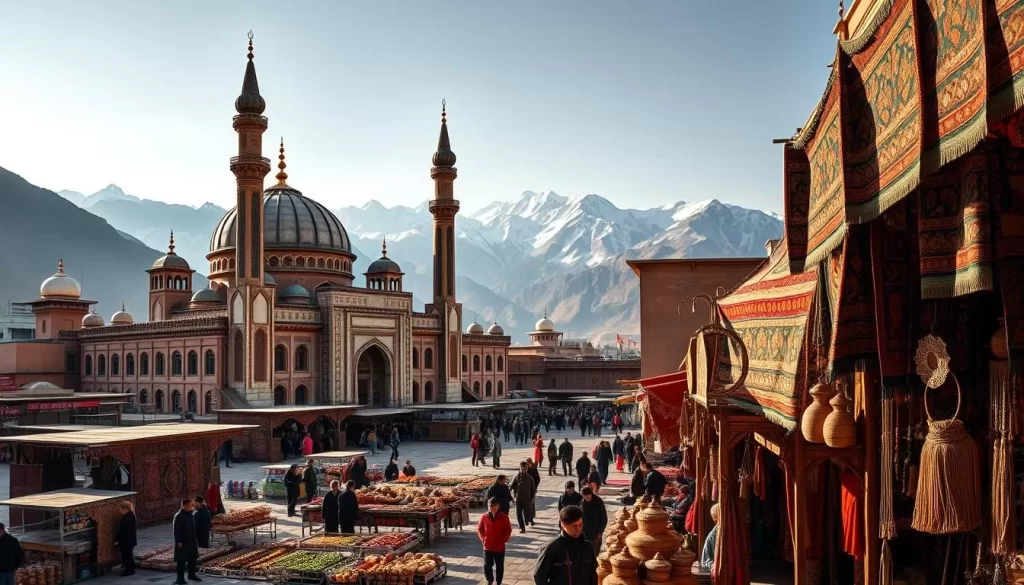
Nowruz: Celebrating the Persian New Year
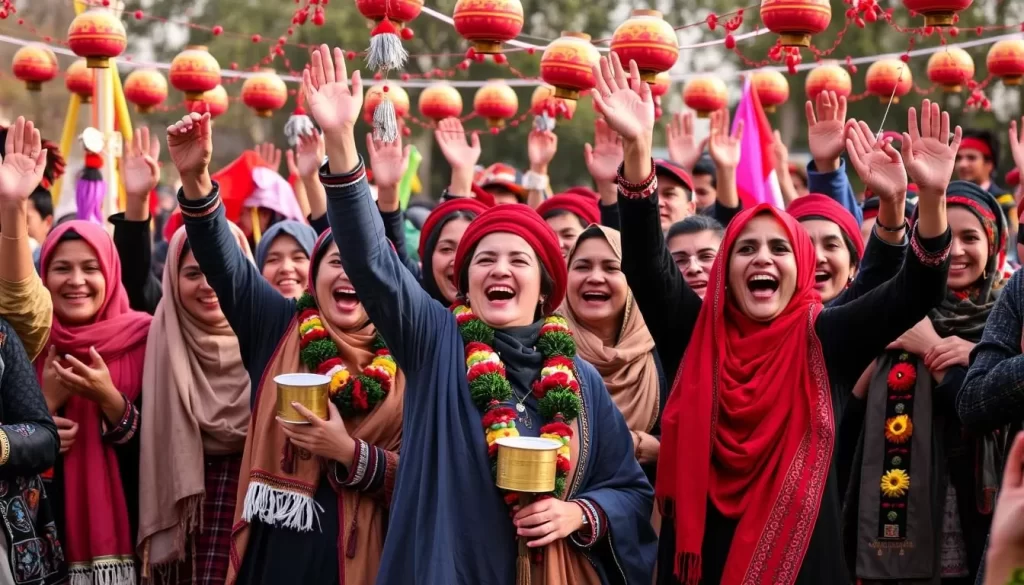
In Afghanistan, the Nowruz festival is a cherished tradition, embodying the country’s rich cultural heritage and its people’s hopes for a prosperous new year. Nowruz, celebrated on the vernal equinox, marks the beginning of the Persian New Year and has been observed for over 3,000 years.
The History and Significance of Nowruz
Nowruz is not only significant in Afghanistan but also across several countries in Central Asia, the Middle East, and parts of the Caucasus. For Afghans, Nowruz symbolizes the arrival of spring, renewal, and hope for a prosperous year ahead. It typically falls on March 21 and heralds the end of the harsh winter months. The significance of Nowruz lies in its representation of new beginnings and the country’s rich afghan culture.
Traditional Nowruz Celebrations in Afghanistan
The celebrations for Nowruz begin in the days leading up to the equinox, with people cleaning their homes, buying new clothes, and preparing traditional foods. You’ll witness one of the country’s most vibrant and historically significant celebrations, marking the Persian New Year and the arrival of spring. Families thoroughly clean their homes, a practice known as “khane tekani” or “shaking the house,” to welcome the new year with freshness and prosperity.
Gul e Sorkh: The Red Flower Festival in Mazar-e-Sharif
In Mazar-e-Sharif, you can experience the famous Gul-e-Surkh (Red Flower) festival, where the landscape transforms with blooming red tulips and the shrine of Hazrat Ali is the center of elaborate celebrations. This annual festival is a traditional fiesta where artists and farmers are awarded for their achievements. Cultural shows and dance performances are held in the evening, making it a great time for everyone present.
During Nowruz, you’ll have the opportunity to witness traditional customs like the Haft Sin table, representing hopes for the new year, including health, wealth, and prosperity. You can also taste special dishes like Samanak, Haft Mewa, and Sabzi Chalaw, each carrying symbolic significance for the new year.
Eid Celebrations: The Most Important Islamic Festivals
When visiting Afghanistan, experiencing Eid celebrations is a must, as they embody the spirit of community and faith. Eid celebrations are a significant part of Afghan culture, reflecting the country’s deep-rooted Islamic traditions.
Eid al-Fitr: Breaking the Fast
Eid al-Fitr, known as the “Festival of Breaking the Fast,” marks the end of Ramadan, the holy month of fasting. It’s a day of joy and gratitude, beginning with a special prayer service in mosques and open fields. Thousands gather to perform the Eid prayer, followed by lavish meals featuring traditional dishes like kabuli pulao and sheer khurma. Families exchange gifts, and the atmosphere is filled with joy.
During Eid al-Fitr, you’ll witness Afghans celebrating the end of Ramadan with new clothes, festive meals, and the exchange of gifts. The celebration transforms cities and villages, with homes and streets decorated, and markets bustling with activity.
| Traditional Dishes | Description |
|---|---|
| Kabuli Pulao | A rice dish with meat and raisins |
| Sheer Khurma | A delicious milk and vermicelli dessert |
| Firnee | Milk pudding, a sweet treat |
Eid al-Adha: The Festival of Sacrifice
Eid al-Adha, or the “Festival of Sacrifice,” commemorates the willingness of the Prophet Ibrahim to sacrifice his son. The highlight is the act of Qurbani, or animal sacrifice, symbolizing faith and obedience. Families purchase sheep, goats, or cows and distribute the meat among family, friends, and those in need, embodying the spirit of charity.
If you visit during Eid al-Adha, you’ll observe the Festival of Sacrifice, where families sacrifice an animal and distribute the meat, reflecting the importance of charity in Afghan culture.
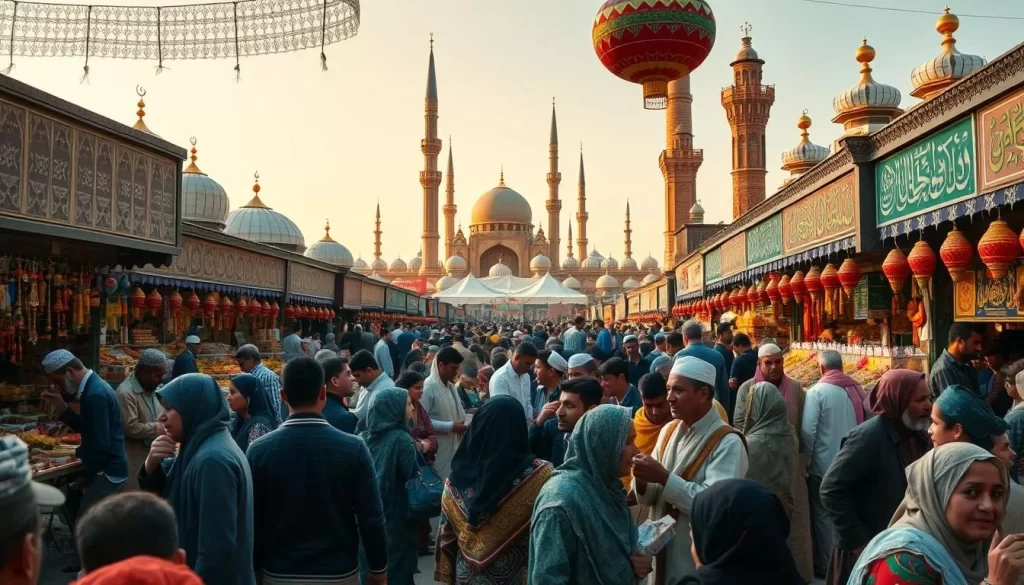
Both Eid festivals offer a unique opportunity to experience Afghan hospitality, with even strangers often invited to join in the festivities. This reflects the importance of community and generosity in Afghan culture.
Afghanistan: Top Festivals to Check Out When Visiting
Afghanistan’s festivals are a testament to the country’s rich cultural tapestry, woven with threads of tradition, history, and community. As you explore this fascinating country, participating in its significant festivals can offer a deeper understanding of Afghan culture and its people’s way of life.
Jesham: Afghanistan’s Independence Day
Jesham, celebrated on August 19th, commemorates Afghanistan’s independence from British rule. This day is marked with patriotic fervor, including military parades and cultural performances that highlight the nation’s spirit of freedom. You can witness firsthand the pride and unity of the Afghan people as they celebrate their independence.
Mawleed al Nabi: Celebrating the Prophet’s Birthday
Mawleed al Nabi, observed on the 12th day of Rabi al Awal in the Islamic calendar, is a significant religious festival. It honors the birthday of Prophet Muhammad and is a time for spiritual reflection and communal gatherings. During this period, you can observe how Afghans come together in religious centers to offer prayers and distribute food to the poor, showcasing their deep devotion.
Ashura: A Day of Remembrance
Ashura, on the 10th day of Muharram, is a solemn occasion for Shia Muslims, commemorating the martyrdom of Husayn bin Ali, grandson of Prophet Muhammad. This day is observed with processions and gatherings that reflect on the historical significance of the event. You can witness the reverence and respect with which this day is observed, particularly in areas with significant Shia populations.
| Festival | Date | Significance |
|---|---|---|
| Jesham | August 19th | Independence from British rule |
| Mawleed al Nabi | 12th Rabi al Awal | Prophet Muhammad’s birthday |
| Ashura | 10th Muharram | Martyrdom of Husayn bin Ali |
These festivals not only highlight the diverse aspects of Afghanistan’s cultural heritage but also offer a unique opportunity to engage with the local community and understand the values that shape Afghan identity. By participating respectfully in these celebrations, you can gain a richer understanding of the country’s traditions and the importance of these events in the lives of its people.
Regional Celebrations and Seasonal Festivals
Afghanistan’s diverse geography and rich cultural heritage give rise to a variety of regional celebrations and seasonal festivals that reflect the country’s vibrant culture and deep connection with nature. The regional celebrations and seasonal festivals in Afghanistan are a testament to the country’s diverse cultural landscape and its people’s deep connection with nature.
These festivals are not only a reflection of the country’s rich heritage but also an opportunity for visitors to experience the authentic Afghan culture and traditions. When you visit Afghanistan during these festivals, you get to witness the joy and celebrations firsthand, as locals come together to celebrate the changing of the seasons and the harvests.
Apple Blossom Festival in Wardak Province
The Apple Blossom Festival, held annually on April 23rd in Wardak Province, is a charming regional celebration that marks the advent of spring. This fun-filled festival includes music and dance performances, as well as community picnics among the flowering orchards. You can experience the warmth of Afghan hospitality and witness the community coming together to celebrate the renewal of nature.
- The festival offers a glimpse into rural Afghan life, showcasing traditional music and dance performances.
- Local farmers celebrate the promise of a good harvest with special foods made from last year’s apple harvest.
Mushaira: The Orange Blossom Festival in Jalalabad
In Jalalabad, the Mushaira or Orange Blossom Festival is observed on April 13th, filling the air with the sweet fragrance of orange blossoms. Locals gather to celebrate with poetry recitations, music, and festive meals under the flowering trees. This festival is a celebration of the region’s unique natural bounty and the culture that surrounds it.
- The festival is a testament to the Afghan people‘s deep connection with nature and their agricultural traditions.
- You can attend the festival and experience the joy and celebrations firsthand, surrounded by the beauty of nature.
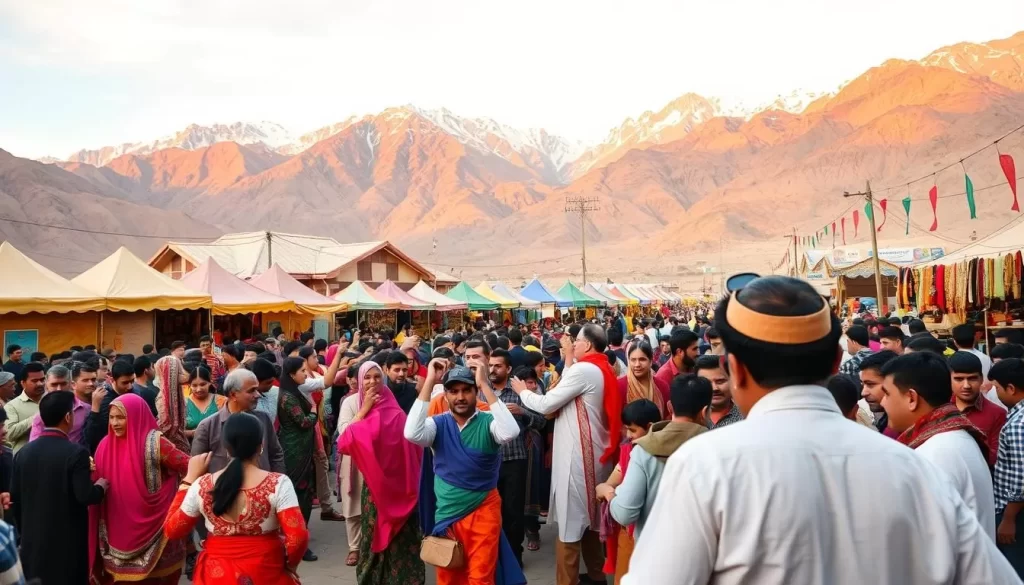
Traditional Games and Sports During Festivals
During Afghan festivals, you can experience the country’s rich traditions, including thrilling sports and entertaining games that bring people together. The vibrant atmosphere is filled with excitement as locals and visitors alike participate in or watch these events. Traditional Afghan music, played on instruments like the rubab and dhol, sets the tone for the celebrations.
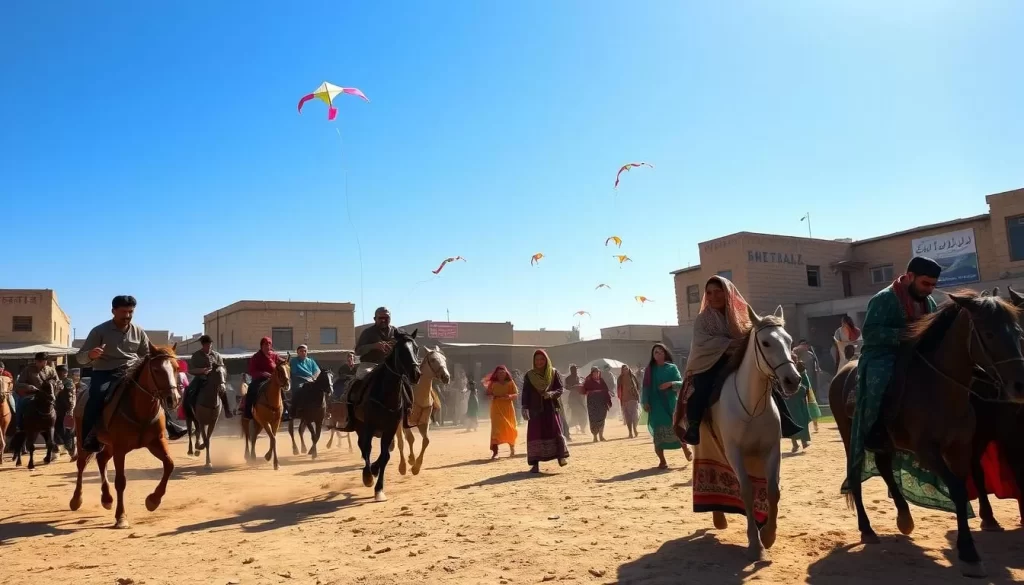
Buzkashi: Afghanistan’s National Sport
Buzkashi, Afghanistan’s national sport, is a thrilling display of horsemanship and strategy, where skilled riders compete to grab and carry a goat carcass across a goal line. This exciting game is often the highlight of Nowruz celebrations and other major festivals, drawing large crowds of enthusiastic spectators. The skill and bravery displayed by the horsemen make Buzkashi a captivating spectacle.
Other Traditional Games and Activities
Beyond Buzkashi, Afghan festivals feature a variety of traditional games and activities that bring people together across generational and tribal lines. You can observe or participate in games like Toop Danda, similar to baseball, Ghosai, a form of wrestling, and Kite Fighting, which become central activities during festival gatherings. These activities, along with traditional music and dance performances, create a lively and festive atmosphere that strengthens community bonds and preserves cultural heritage.
The Culinary Experience During Afghan Festivals
As you immerse yourself in Afghan festivals, you’ll discover the pivotal role that food plays in the celebrations. The country’s rich cultural heritage is reflected in its diverse and flavorful cuisine, which brings people together and fosters a sense of community.
During these festive occasions, families prepare elaborate feasts that showcase Afghanistan’s culinary traditions. The spirit of generosity is evident as families invite friends and neighbors to join in the festivities, promoting a sense of togetherness and joy.
Traditional Dishes Served During Celebrations
Afghan festivals feature a variety of traditional dishes, each carrying its own symbolic significance. For instance, during Nowruz celebrations, you can savor special dishes like Samanak, a sweet paste made from wheat germ, and Haft Mewa, a compote of seven dried fruits and nuts, symbolizing abundance and good fortune.
Other traditional dishes served during Afghan festivals include Sabzi Chalaw, a spinach and rice dish, and various kebabs and rice dishes prepared specially for the occasion. These dishes not only delight the palate but also highlight the country’s rich cultural heritage.
Sweet Treats and Special Festival Foods
No Afghan festival is complete without an array of sweet treats and special festival foods. During Eid celebrations, you’ll be treated to Sheer Khurma, a sweet vermicelli pudding with dates and nuts, and Firnee, a milk pudding topped with pistachios.
These sweet delicacies are not only delicious but also carry symbolic meanings, such as during Eid al-Adha, where the meat from sacrificed animals is divided among family, friends, and those in need, promoting a sense of generosity and community.
Planning Your Visit Around Afghan Festivals
Afghanistan’s festivals are a window into the country’s soul, and planning your visit around them can be a rewarding experience. To make the most of your trip, it’s essential to research festival dates carefully, as many celebrations follow the lunar Islamic calendar.
Best Times to Experience Afghan Festivals
If you’re interested in experiencing Nowruz, plan your visit in late March, around the spring equinox. Mazar-e-Sharif offers the most elaborate celebrations, centered around the Shrine of Hazrat Ali and its famous red tulip displays. For Eid celebrations, consult an Islamic calendar for the year of your visit, as Eid al-Fitr and Eid al-Adha move relative to the Gregorian calendar.
| Festival | Time of Year | Location |
|---|---|---|
| Nowruz | Late March | Mazar-e-Sharif |
| Eid al-Fitr | Variable (Islamic calendar) | Various locations |
| Eid al-Adha | Variable (Islamic calendar) | Various locations |
Cultural Etiquette and Respectful Participation
When participating in Afghan festivals, be mindful of cultural etiquette. Dress modestly, covering your shoulders, chest, and knees. Remove your shoes when entering homes or religious buildings, and ask permission before taking photographs of people. Working with a reputable local guide or tour company can enhance your festival experience by providing cultural context and facilitating introductions to local families.
Conclusion: Embracing the Spirit of Afghan Celebrations
Experiencing Afghan festivals is a journey into the heart of the country’s culture and community. As communities come together to celebrate, the essence of hospitality, joy, and shared heritage becomes palpable. The significance of these gatherings transcends mere observance; they are vital for maintaining social bonds and cultural continuity.
Through an exploration of major festivals and traditional customs, you’ll appreciate the intricate tapestry that is woven through Afghan society. The rich cultural heritage of Afghanistan is reflected in its numerous festivals, showcasing the importance of both individual and collective experiences. You’ll discover that Afghan festivals are more than just celebrations—they’re windows into the soul of a country rich in history, tradition, and resilience.
By embracing the spirit of Afghan celebrations, you’ll return home with a deeper understanding of a place where the beauty of human connection and cultural expression continues to thrive. The hospitality you’ll receive during festival times exemplifies the Afghan saying that “a guest is a gift from God,” as families open their homes and hearts to visitors. This experience will leave you with lasting memories and insights into the rich cultural heritage of Afghanistan.
The above is subject to change.
Check back often to TRAVEL.COM for the latest travel tips and deals.
